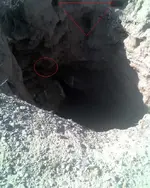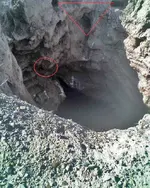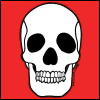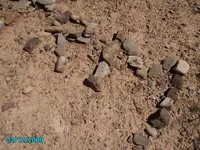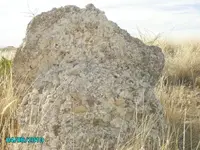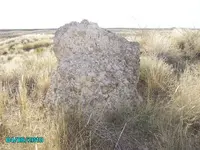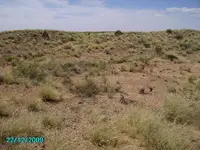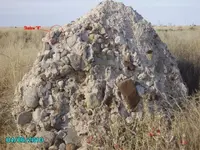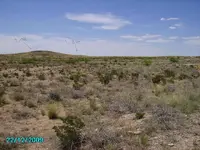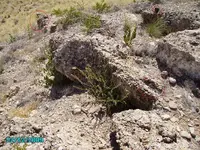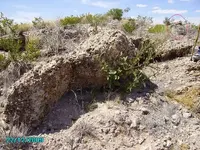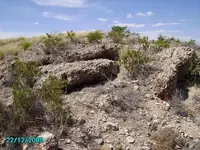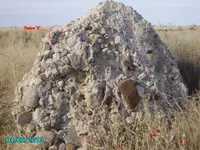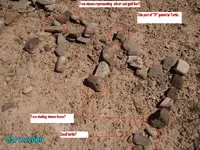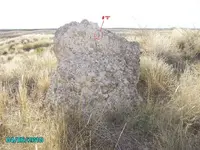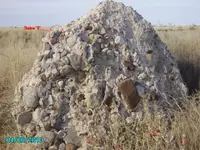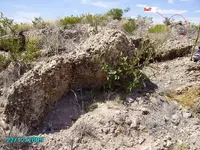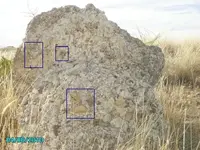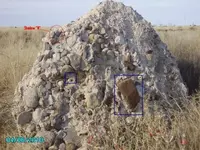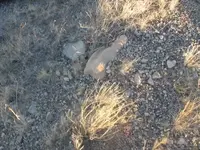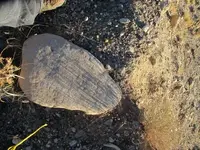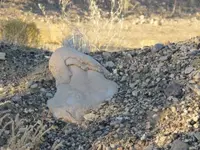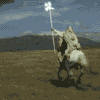rangler
Bronze Member
- Joined
- Jul 12, 2004
- Messages
- 1,320
- Reaction score
- 201
- Golden Thread
- 0
- Detector(s) used
- for solutions to the jesuit code -email pics to: randy_ferringer@yahoo.com
;rangler8@gmail.no locations needed! oro bro!
- Primary Interest:
- Other
Senior Pala,
Just some comments that might help...
This is not a mine, it is a cave, natural most likely, mine ceilings are solid rock with a quartz vien or two, that they were following. Also as posted by Tesero Dog the aritcle about the tunnel with the gold stashed in the back, well that tunnel was 'filled' meaning it took a lot of work to get the goods. Your cave is not backfilled. so really the whole thing is about the pheasant, if it is a horse, then it means the Kings goods are about.
So then thats brings us to the possible signs, whats his name EE thr said [correctly]that this rock was not the type to carve signs on, correct. However the dangers of pareidolia is apparent, looking at your mark up , I see what you are calling an eagle, however it is a different sort of bird. You had no way to know this, most likely, and you simply followed the lines you saw etched in the rock. That is why I know it is a real sign. It is namely a Ringneck Pheasant, originally for China by the way. I have my own Pheasant Sign on my last Monument, where posted from the field. The irony of this sign is that this bird is a native of China. The Jesuits whos brothers rotated in and out of China, as a matter of course, knew this bird, but the fact this bird was not in America when this sign was made! The Jesuits had no idea that hundreds of years later, American sportsman's would import this bird who - took to America like its natural home. One of the reasons that the Jesuits would use this Bird as a treasure sign is that the attribute of animals are the secret to the Code. They knew that the Pheasant is a 'short flighted' bird, that is they flush straight up to height about 20' then the lock their wings and make these long slow flights using lift, as gravity takes hold, ending in a long slow drop over a 100 yards or so..the pheasant means the omega is close.
So your excellent tracking the lines revealed the pheasant. This takes it out of the hands of pareidolia!
Very cool,
rangler

Just some comments that might help...
This is not a mine, it is a cave, natural most likely, mine ceilings are solid rock with a quartz vien or two, that they were following. Also as posted by Tesero Dog the aritcle about the tunnel with the gold stashed in the back, well that tunnel was 'filled' meaning it took a lot of work to get the goods. Your cave is not backfilled. so really the whole thing is about the pheasant, if it is a horse, then it means the Kings goods are about.
So then thats brings us to the possible signs, whats his name EE thr said [correctly]that this rock was not the type to carve signs on, correct. However the dangers of pareidolia is apparent, looking at your mark up , I see what you are calling an eagle, however it is a different sort of bird. You had no way to know this, most likely, and you simply followed the lines you saw etched in the rock. That is why I know it is a real sign. It is namely a Ringneck Pheasant, originally for China by the way. I have my own Pheasant Sign on my last Monument, where posted from the field. The irony of this sign is that this bird is a native of China. The Jesuits whos brothers rotated in and out of China, as a matter of course, knew this bird, but the fact this bird was not in America when this sign was made! The Jesuits had no idea that hundreds of years later, American sportsman's would import this bird who - took to America like its natural home. One of the reasons that the Jesuits would use this Bird as a treasure sign is that the attribute of animals are the secret to the Code. They knew that the Pheasant is a 'short flighted' bird, that is they flush straight up to height about 20' then the lock their wings and make these long slow flights using lift, as gravity takes hold, ending in a long slow drop over a 100 yards or so..the pheasant means the omega is close.
So your excellent tracking the lines revealed the pheasant. This takes it out of the hands of pareidolia!
Very cool,
rangler




 ??
??
